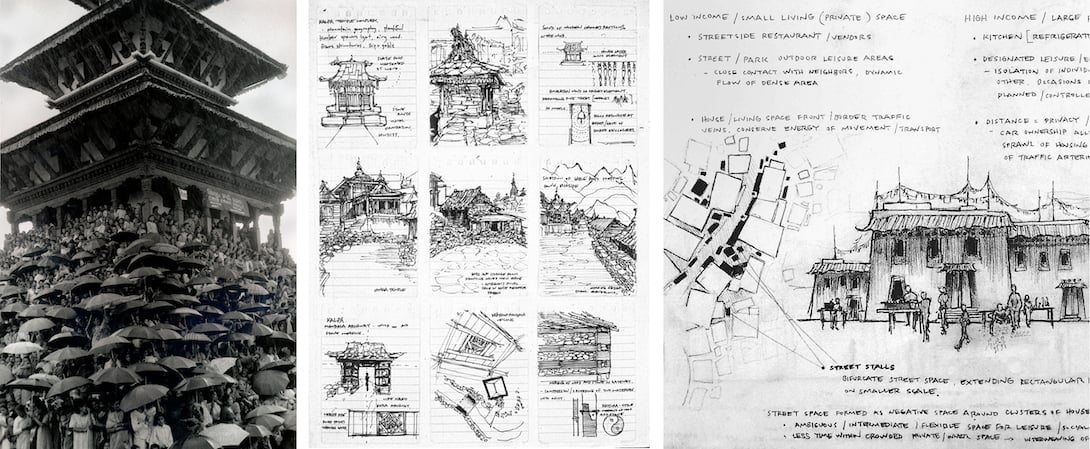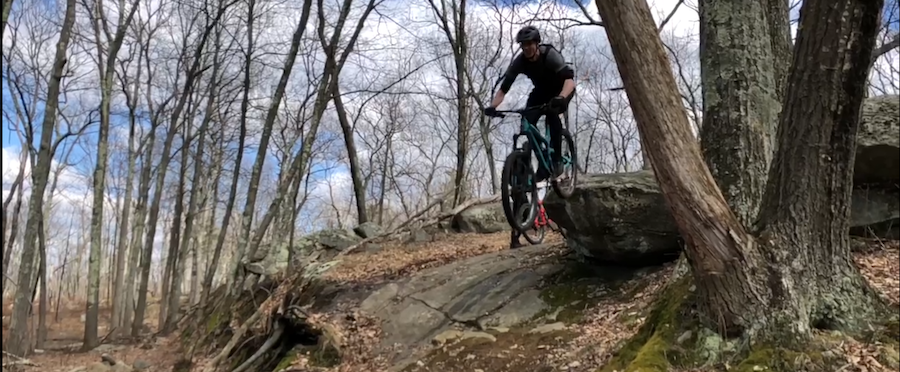Chris Parlato grew up in Washington, DC, received his AB in Visual and Environmental Studies and East Asian Studies from Harvard College and his Masters in Architecture from Harvard Graduate School of Design. After working for an architectural research lab in Rotterdam, he found his way to innovation strategy and has spent the last decade in Boston tackling a wide range of product, UX and service design challenges.
1. What might people not know about you?
“As the child of two globe-trotting, polyglot parents working for international NGOs, I was fortunate to grow up with very broad cultural horizons. At 16 I was studying Mandarin and spending my summers apprenticing with an artist in Shanghai. Supported by research fellowships, stints as a travel guide writer, architectural jobs, and bootstrap backpacking, I managed to spend the next ten summers in China and Mongolia, a year in Japan, and a year traveling across the Himalayas through Tibet, Nepal, and India. Throughout it all I wrote, sketched, and photographed compulsively as a means to process and decode the human and built landscapes I was encountering. In many ways, these experiences set the stage for the work I do today in design research.”

Temple in Nepal, photographed and sketched by Chris. (Durbar Square, Kathmandu, Nepal, 2001)
2. So you were an Architect in a past life. What brought you to Research and Innovation Strategy?
“Even pursuing my professional degree I found that I was more excited by architectural theory than by the mechanics of building systems and construction. Then, working in Rem Koolhaas’ AMO research & strategy lab after graduation definitely widened my perspective on the potential field of professional architectural practice; we designed environments for Prada, curation strategies for the Hermitage museum, and infrastructure plans for the Dutch wind power industry. We never used the term Design Thinking, but the practice was built around similar research-frame-iterate-test cycles. In 2009 the building industry was tanking and the world of tech was booming, so I decided to see what it was all about. It’s been a fascinating decade. And I haven’t entirely abandoned architecture! Whether it’s through personal projects or environmental and retail design strategy work at Essential, I’m always on the lookout for productive overlaps between design strategy and architecture/ urbanism.”
3. What did you carry from the architecture world into the world of design?
“Architectural practice built important muscles in systems thinking. Being able to manage a high level of project complexity and to think end to end and surface to core has definitely helped me in research and strategy. On a skills level, architecture also taught me the value of diagramming as a visual thinking process to dissect, organize, conceptualize, and propose. And of course, whether in architecture or design consulting, the ability to sell an idea through storytelling, research and compelling visual narratives is equally fundamental.”
4. How would you describe your role at Essential?
“As a Principal in the Innovation Strategy group, I lead projects at the intersection of design, business, and brand. I collaborate heavily with client teams and Essential’s industrial and digital design specialists, using Design Thinking and lean processes to navigate new product and service development challenges. Depending on the project I might be focused on qualitative research and insights, or working to translate insights and strategy into user flows, storyboards, product attributes, or creative briefs. Throughout this process my key role is as an organizer and communicator- aligning teams around learnings and insights, articulating strategy, and translating strategy into design.”
5. What types of challenges do you often see clients facing in your work?
“Digitization and its secondary market effects have really shaken up the business landscape over the past decade. My clients at Essential are often either incumbents trying to adapt to disruption of their industry, or young companies with ambition to be the disruptors. Both are seeking to better understand their customer, and both struggle with product- market fit. In my experience, older established companies often find it organizationally challenging to do innovation properly, and even more so to operationalize innovative ideas. The startups are used to thinking differently and making things fast, but have a hard time finding their north star, and making strategic and creative decisions that will get them there.”
6. What are the biggest emerging tech trends influencing how we innovate?
“Shifts are afoot I think in terms of the way we identify opportunities through design research. Where face-to-face ethnography used to be the core method by which Design Thinking practitioners dove deep into the world of their target customer in order to generate applied insights, today this is happening more and more through digital channels, and often with larger study sizes. This is enabled both through platforms like Dscout, through social media research, and through online and in-situ data tracking. In some ways the design research and market research toolkit are overlapping.”
7. We hear you're a big mountain biker. Tell us about that.
“Mountain biking is an amazing vehicle to explore rugged natural places. I’m not really competitive in the spandex and race tag sense of things, but definitely enjoy pushing myself to surmount obstacles, go faster, ride ever more technical lines, and avoid the ER as much as possible. Not unlike design consulting, mountain biking requires a lot of high-speed decision making based on a close reading of terrain. Plus for someone working in product design, mountain bikes are an incredibly seductive embodiment of form and function. We’ve got a good crew of riders at Essential so there's not a small amount of gear talk at the lunch table. There are some fantastic places to ride within an hour drive of Boston.”

Chris riding the Vietnam mountain bike trail in Milford, MA. (Credit: Paul Naddaff, 2018)
8. Your first child just turned 1! What has been your biggest lesson in fatherhood?
“Be flexible. There’s a lot in parenting (and life) that you can’t control, so the best thing you can do is try to adapt and enjoy the ride. Also, early mornings are not actually that bad.”
9. Think about one memorable project you've worked on in the past and tell us about it.
“A client once asked my team to define the future of the American appliance market by looking for patterns in its history over the past century. We spent 3 months doing what we called “ad archaeology”: pulling washing machine, cooktop and refrigerator ads from Harvard’s home magazine archive and contextualizing the machine designs and messaging against the design zeitgeist and sociocultural landscape at the time. Fascinating stuff, and resulted in some really interesting, and if I do say so, prescient suggestions as to where we were going next.”
10. Where do you turn to for inspiration?
“There’s so much good stuff to read and see and listen to these days. I tend to graze pretty widely. Aesthetically, I’ve been inspired recently by the curated moods of @somewheremagazine, the future beats of djComplexion, and the "nostalgic utopias" of @hannespeer. When I get existential angst about my role in fueling gratuitous consumerism, I find Behavioral Scientist and the 99% Invisible podcast offer great case studies on how design interventions can have a subtle but powerful impact on the medium of daily life.”
Want to know more about Innovation Strategy at Essential?



